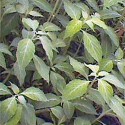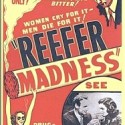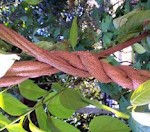Explore Articles Filed Under: Legal Issues

Some time ago, on a discussion group, a woman posted that she had been sexually assaulted by a shaman at an ayahuasca retreat center in the Upper Amazon. During the course of the occasionally heated discussion that followed, I took the position — which I still maintain — that it is unethical for a shaman to have sex with a patient under any circumstances, even when the sex is apparently consensual. I reproduce the relevant portions of my posts here.

The plant Salvia divinorum has a long and continuing tradition of use by Mazatec shamans, who drink it, sometimes followed by a drink of tequila, to induce visionary states during healing sessions. Popular use of Salvia, especially among young people, has been increasing — along with calls for its criminalization. Some medical researchers argue that scheduling the drug should wait until evidence about its effects and toxicity becomes clear. A recent article in Scientific American addresses the issues.

According to several recent news reports, the U.S. Fish and Wildlife Service is currently conducting a large-scale undercover investigation targeting people who are illegally buying, selling, or receiving bald and golden eagle feathers. On March 12, federal agents arrested four men — three from Washington and one from Oklahoma — for killing eagles and selling their feathers. One of the men, Reginald Dale Akeen, an enrolled Kiowa, is accused of traveling the powwow circuit under the name of J. J. Lonelodge and selling illegally obtained feathers to dance competitors for use in their regalia.

On March 18, 2009, United States District Judge Owen M. Panner found that the Religious Freedom Restoration Act protects the Santo Daime’s use of ayahuasca as a sacrament of their church. The court was guided by the unanimous decision of the United States Supreme Court in the very similar União do Vegetal case in 2006, and concluded that RFRA requires that — subject to reasonable restrictions — the plaintiff church be allowed to import and drink ayahuasca for their religious ceremonies.

Given the current climate of moral panic and the attendant assault on Salvia divinorum — possession of which is now a felony, at last count, in thirteen states, although it is hard to keep up — I thought we might do some thinking about drugs and the law generally. Let us say that I have been arrested for possession of an illegal hallucinogen. Let us say, too, that I possess that substance, not because it is a sacrament in my church, but because I simply want to experience a hallucinatory mental state. Since I cannot rely on the Religious Freedom Restoration Act, are there any constitutional arguments available to me?
I have written previously on the legal status of ayahuasca in the United States. In response, I have received claims to the effect that, while possession or sale of DMT may be a felony, it is legal to possess plants containing DMT, such as chacruna. I have struggled to find the source of this contention — which has achieved the status of folklore — and I think I have found it.

This blog has previously touched on what I called the war on coca leaves. There also now appears to be a war on the psychoactive plant Salvia divinorum, long used by indigenous Mazatec shamans in Mexico, and recently of interest to a wider range of users as a legal hallucinogen. At least it was legal until now. Despite the fact that the plant appears to have little potential for either abuse or addiction, and tastes awful, an increasing number of states have passed, or are considering passing, legislation to prohibit the use or possession of the plant. Florida state representative Mary Brandenburg, for example, has introduced a bill to make possession of Salvia a felony punishable by up to five years in prison.

Chewing the leaves of the coca plant (Erythroxylum coca) plays a significant role in traditional Andean culture. Coca acts as a stimulant to overcome fatigue, hunger, and thirst. It is considered particularly effective against altitude sickness. It also is used as an anaesthetic to alleviate the pain of headache, rheumatism, wounds and sores. Coca leaf chewing is most common among indigenous communities across the central Andean region, particularly in the highlands of Colombia, Ecuador, Bolivia, and Peru, where the cultivation and consumption of coca is part of the national culture, and where sharing coca leaves is a powerful symbol of social and cultural solidarity.

While it is apparently legal in the United States to possess the ayahuasca vine and its β-carboline constituents, it is clearly illegal to possess DMT, or any plants, such as chacruna, that contain DMT. Under Chapter 13 of the Controlled Substances Act, DMT is classified as a Schedule I drug, meaning the Drug Enforcement Administration has found that it has a high potential for abuse, has no currently accepted medical use in treatment in the United States, and lacks accepted safety for use under medical supervision. A person who manufactures, distributes, or dispenses DMT, or possesses DMT with intent to manufacture, distribute, or dispense it, “shall be sentenced to a term of imprisonment of not more than 20 years.”

Just about ten years ago, Amazonian shamans discovered, to their considerable surprise, that an American had patented ayahuasca. In 1981, Loren Miller, director of California-based International Plant Medicine Corporation, took a sample of ayahuasca back to the United States. Miller then patented it with the U.S. Patent and Trademark Office, claiming a new plant variety he called Da Vine, and in 1986 obtained exclusive rights to sell and breed the plant. It was not until ten years later that Amazonian native people became aware that one of their sacred plants was now under U.S. patent law.

Discussing the article:
Hallucinogens in Africa